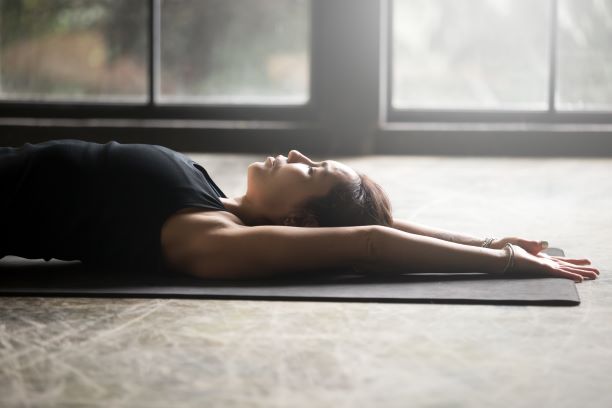Millions of Americans suffer from Fibromyalgia. The most common symptoms are muscle and joint pains, fatigue, sleep, and mood disorders. The cause of Fibromyalgia is poorly understood. However, we know the way your brain and spinal cord process painful and nonpainful stimuli is affected.
If you suffer from Fibromyalgia, your brain and spinal cord are in a constant state of high alert. Your nervous system is constantly on guard for any potential threat. And it does not take much for your alarms to sound resulting in pain or any other of the common Fibromyalgia symptoms.
Thankfully, there are things you can do to calm down your nervous system. Exercise is a proven treatment that helps people with Fibromyalgia. But it needs to be the right type of exercise. And maybe, more importantly, it must be the right amount of exercise. This article shows you how gentle stretching exercises can help calm your nervous system and make you feel better.
Stretching: A Proven Way to Help Your Pain From Fibromyalgia
Several different types of exercise are proven to help people with Fibromyalgia. They include aerobics, strength training, and stretching. A 2018 study out of Brazil compared the effects of stretching, strengthening exercise, and no treatment in 44 women with Fibromyalgia. The stretching program lasted 12 weeks and included two 40-minute sessions per week.
At the end of the study, the stretching group showed the greatest improvement in function (28% better) and pain (46% better). Fatigue also improved by 17% and depression improved by 10%. Given the lengthy struggles that most people with Fibromyalgia deal with, these results are quite impressive.
Easy Stretches to Help You Relax
Stretching for Fibromyalgia focuses on the larger muscles of your back, legs, and shoulders. The purpose of stretching is to relax your nervous system. Do not stretch aggressively. Your brain and spinal cord will perceive aggressive exercise as a threat. This will only worsen your pain.
Slow and gentle movements with long holds of 15 to 30 seconds are best. Also, your breathing is very important. Similar to Yoga, you want to concentrate your thoughts on each breath. This relaxes your nervous system and muscles. Breathe in and out slowly. Expand your lungs completely while stretching to get the best results.
Below are 5 different stretches. Pick 2 or 3 that feel the best. Or do them all if this helps. Everyone responds differently. We recommend stretching 3 to 5 days per week. Set aside 20 to 30 minutes during the time of day that is best for you. Most people prefer the morning. Make stretching a habit.
How to Get Started and Feel Better
If you have been battling Fibromyalgia there is a good chance your pain has caused you to decrease your physical activity. Exercise will help you. But overzealous or aggressive exercise will only worsen your pain. Stretching exercises, when done properly, will calm your nervous system, reduce your pain, and increase your energy levels.
Give the stretches shown here a try. If these stretches don’t get the job done, there are others you can do. The physical therapists at BSR have been helping people in Southern Ocean County move without pain since 2007. If you need help, give us a call and schedule an appointment at one of our convenient locations.


